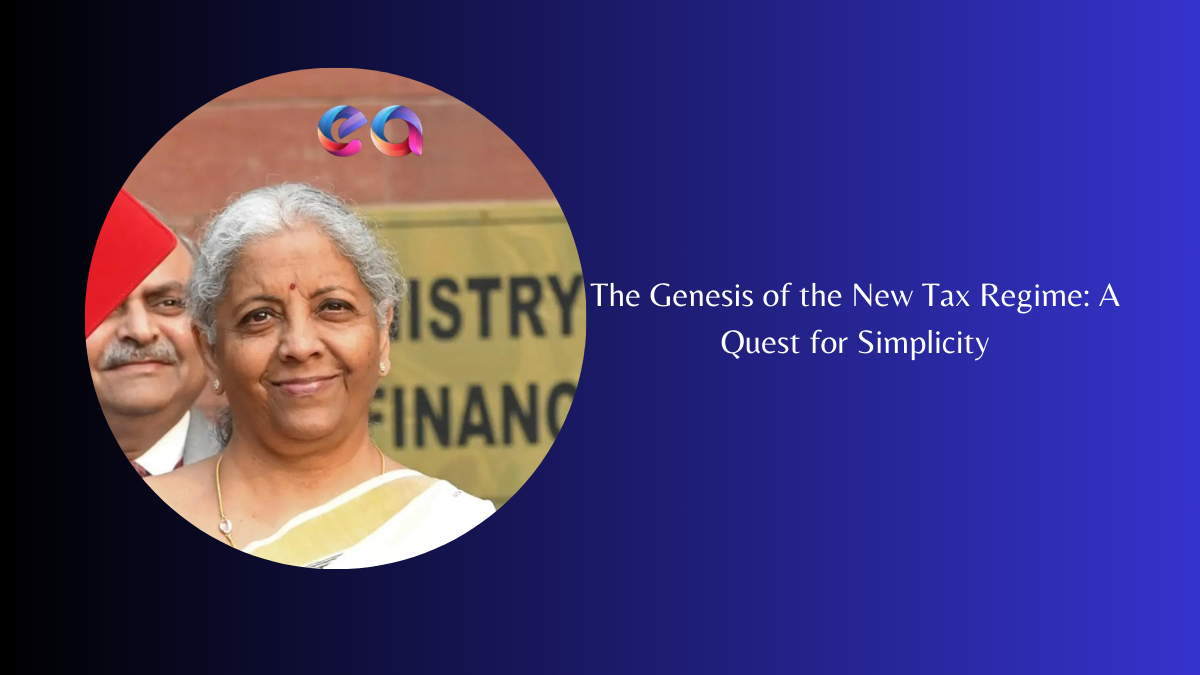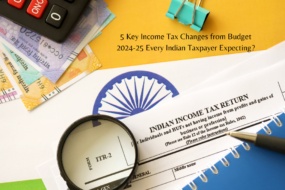
The Indian income tax system has undergone significant transformations in recent years, with the introduction of a new tax regime aimed at simplifying compliance and potentially lowering the tax burden for a significant portion of the population. While the older, more established tax regime offered a plethora of deductions and exemptions, the new regime adopts a different philosophy, emphasizing lower tax rates in exchange for fewer opportunities to reduce taxable income through deductions. Understanding the nuances of the deductions still available under this simplified framework is crucial for taxpayers to make informed decisions and optimize their tax planning.

This article delves deep into the intricacies of the new income tax regime, specifically focusing on the deductions that remain applicable. We will explore the rationale behind this shift, the specific deductions that taxpayers can still avail, and the strategic considerations for choosing between the old and the new tax regimes.
Table of Contents
The Genesis of the New Tax Regime: A Quest for Simplicity
For years, the Indian income tax system was often perceived as complex and riddled with numerous exemptions and deductions. While these provisions aimed to incentivize savings, investments, and specific expenditures, they also led to intricate calculations, increased compliance burden, and potential avenues for tax avoidance. The sheer volume of available deductions often required taxpayers to meticulously track various investments and expenses, making the filing process cumbersome.
The introduction of the new tax regime in the Finance Act 2020 was a direct response to these challenges. The primary objective was to create a simpler tax structure with lower tax rates, thereby reducing the complexity of tax filing and potentially encouraging more taxpayers to comply. The core principle of the new regime is to offer reduced tax rates across various income slabs in exchange for foregoing a significant number of the deductions and exemptions that were available under the old regime.
Initially, the new regime was introduced as an optional alternative. However, it has since become the default tax regime, with taxpayers needing to actively choose the old regime if they wish to avail its broader range of deductions and exemptions. This shift underscores the government’s intention to promote the adoption of the simpler tax structure.
The Trade-Off: Lower Rates vs. Fewer Deductions
The fundamental trade-off between the old and the new tax regimes lies in the balance between tax rates and available deductions. The new regime generally offers lower tax rates across different income slabs compared to the old regime. However, this benefit comes at the cost of significantly fewer deductions and exemptions.
Under the old regime, taxpayers could reduce their taxable income by claiming deductions for various investments (like Provident Fund, National Savings Certificate, Equity Linked Savings Schemes), insurance premiums, housing loan interest, education expenses, and several other specific expenditures. These deductions could substantially lower the taxable income, potentially leading to a lower overall tax liability, even if the tax rates were comparatively higher.
In contrast, the new regime significantly restricts the availability of these deductions. The rationale is that the lower tax rates themselves will provide sufficient relief to taxpayers, eliminating the need for complex calculations and tracking of numerous deductions.
The Surviving Deductions Under the New Tax Regime: A Closer Look
While the new tax regime significantly curtails the scope of deductions, it does not entirely eliminate them. Certain deductions, primarily those related to employer contributions and a few specific circumstances, continue to be available under the new regime. Understanding these surviving deductions is crucial for taxpayers who have opted for or are considering the new tax structure.
Here are the key deductions that can still be claimed under the new income tax regime:
- Employer’s Contribution to NPS (Section 80CCD(2)): This is a significant deduction that remains available under the new regime. Section 80CCD(2) allows employees (both in the public and private sectors) to claim a deduction for the employer’s contribution to their National Pension System (NPS) account. The maximum deduction allowed is up to 10% of the employee’s salary (basic pay + dearness allowance) for private-sector employees and up to 14% for government employees. This deduction is over and above the employee’s own contribution under Section 80CCD(1B)
- Significance: This deduction encourages retirement savings and recognizes the employer’s role in contributing to their employees’ financial security. Its continued availability under the new regime highlights the government’s focus on promoting long-term retirement planning.
2. Deduction for Amount Paid or Deposited in the Agniveer Corpus Fund (Section 80CCH): Introduced more recently, this deduction specifically applies to individuals enrolled in the Agnipath Scheme and contributing to the Agniveer Corpus Fund. Section 80CCH allows a deduction for the amount deposited by the individual in this fund.
- Significance: This deduction is specific to a particular government initiative and aims to provide tax benefits to individuals participating in the Agnipath Scheme.
3. Deduction for Investment in Start-ups (Section 80IAC): While primarily benefiting the start-ups themselves through tax holidays, investors in eligible start-ups can also claim a deduction under Section 80IAC. This deduction is available to individuals who invest in start-ups that meet certain criteria and have been granted recognition by the Inter-Ministerial Board of Certification.
- Significance: This provision aims to encourage investment in the burgeoning start-up ecosystem in India, fostering innovation and economic growth.
4. Deduction for Income from Unit Located in International Financial Services Centre (IFSC) (Section 80LA): This deduction is available to units located in an International Financial Services Centre (IFSC) for a specified period. While not directly applicable to most individual taxpayers, it’s an important provision within the broader tax framework.
- Significance: This deduction aims to promote the development of IFSCs in India by offering tax incentives to businesses operating within these zones.
The Deductions Foregone: A Comparative Perspective
To truly appreciate the implications of the new tax regime, it’s essential to understand the significant deductions that are not available under this simplified structure. These include popular deductions that many taxpayers relied upon under the old regime, such as:
- Standard Deduction: A flat deduction allowed to salaried individuals and pensioners to cover work-related expenses.
- House Rent Allowance (HRA) Exemption: An exemption for the HRA received by salaried employees, subject to certain conditions.
- Leave Travel Allowance (LTA) Exemption: An exemption for the amount received by employees from their employer for travel undertaken during leave.
- Deductions under Chapter VIA: This encompasses a wide range of deductions related to investments and expenditures, including:
- Section 80C: Investments in Provident Fund (PF), Equity Linked Savings Schemes (ELSS), National Savings Certificate (NSC), life insurance premiums, tuition fees, principal repayment of home loans, etc. (with a combined limit).
- Section 80D: Medical insurance premiums.
- Section 80E: Interest paid on education loans.
- Section 80G: Donations to eligible charitable institutions.
- Section 80TTA/80TTB: Interest income from savings accounts (for individuals below and above 60 years, respectively).
- Section 80CCD(1) & 80CCD(1B): Employee’s own contribution to NPS.
- Section 80DDA & 80U: Deductions for maintenance of a dependent with a disability and for persons with disabilities, respectively.
- And many other specific deductions.
- Interest on Housing Loan (Section 24(b)): Deduction for interest paid on loans taken for the purchase or construction of a self-occupied property (up to ₹2 lakh) or let-out property.
The absence of these widely utilized deductions is the primary reason why many taxpayers still prefer the old tax regime, especially those who have significant investments in tax-saving instruments or substantial interest payments on home loans.
Making the Choice: Old vs. New Tax Regime
The decision of whether to opt for the old or the new tax regime is a crucial one that depends on individual financial circumstances and tax planning strategies. There is no one-size-fits-all answer. Taxpayers need to carefully evaluate their income, investments, eligible deductions, and potential tax liability under both regimes to make an informed choice.
Factors Favoring the New Tax Regime:
- Lower Tax Rates: For individuals who do not have significant investments or eligible deductions, the lower tax rates under the new regime might result in a lower overall tax liability.
- Simplicity: The reduced number of deductions simplifies the tax calculation and filing process, reducing the compliance burden.
- Reduced Need for Documentation: Without the need to claim numerous deductions, taxpayers may have to maintain less documentation.
Factors Favoring the Old Tax Regime:
- Significant Investments: Individuals who make substantial investments in tax-saving instruments like PF, ELSS, and life insurance premiums can significantly reduce their taxable income under the old regime through Section 80C deductions.
- Home Loan Interest: Taxpayers with significant interest payments on home loans can claim a substantial deduction under Section 24(b) in the old regime.
- Medical Insurance: Deduction for medical insurance premiums under Section 80D can provide significant tax benefits, especially for families with high healthcare costs.
- Other Eligible Deductions: Individuals who qualify for various other deductions like education loan interest (Section 80E), donations (Section 80G), or deductions for disabilities (Section 80DDA/80U) might find the old regime more beneficial.
Strategic Considerations for Tax Planning
Regardless of the tax regime chosen, effective tax planning is essential. Here are some strategic considerations for navigating the new fiscal landscape:
- Accurate Assessment: Before choosing a tax regime, taxpayers should accurately assess their income, potential deductions, and calculate their tax liability under both options. Online tax calculators and professional advice can be helpful in this process.
- Investment Decisions: The choice of tax regime can influence investment decisions. If opting for the old regime, prioritizing tax-saving investments becomes more relevant. Under the new regime, the focus might shift towards investments with better returns, irrespective of tax benefits (although retirement planning through NPS still offers benefits).
- Long-Term Financial Goals: Tax planning should align with long-term financial goals, such as retirement planning, children’s education, and wealth creation.
- Regular Review: Tax laws and personal financial circumstances can change. It’s advisable to review the chosen tax regime and tax planning strategies periodically to ensure they remain optimal.
Conclusion: Embracing the Evolving Tax Landscape
The introduction of the new income tax regime in India represents a significant step towards simplifying the tax structure. While it offers the allure of lower tax rates, it also requires taxpayers to carefully consider the trade-off of foregoing a wide array of deductions that were available under the old regime.
The deductions that continue to exist under the new regime, primarily related to employer contributions to NPS and a few specific government initiatives, are important to understand. However, for many taxpayers, the decision between the old and the new regime will hinge on a thorough evaluation of their individual financial circumstances, investment patterns, and the potential tax benefits offered by the broader range of deductions available under the traditional structure.
Ultimately, the “better” tax regime is subjective and depends on individual circumstances. By understanding the nuances of both systems, particularly the deductions available (or unavailable) under the new regime, taxpayers can make informed decisions that align with their financial goals and optimize their tax outcomes in this evolving fiscal landscape. The key lies in careful assessment, strategic planning, and a clear understanding of the trade-offs involved in choosing between simplicity and the potential for greater tax savings through deductions.












